Author: Oliver Wrede
-

The business value of Design
Business leaders who focus on their balance sheets are likely to overlook the potential value that a good design team can bring to the overall performance and value of a company. In other words: The business value of design is not just its ability to generate direct revenue, but its potential to improve almost every…
-
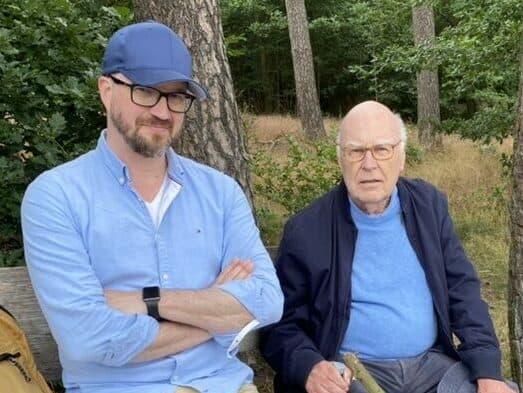
Studying and Teaching Interface Design
This text describes how I got to know Gui Bonsiepe over 30 years ago, what it meant for me to study with him, how this subsequently influenced my own teaching, and what I think his work means for me today. These are personal thoughts. I nevertheless hope that they have meaning for readers with an…
-

US Justice Department launches large scale lawsuit against Apple
The US Department of Justice is going after Apple and their anti-competitive strategies to practically establish and maintain monopoly power in the market. This pretty much resonates with my recent rant about Apples greedy practices by making their hardware almost impossible to repair (by pairing parts inside a device so that replacing them would cripple…
-

New Seminar »Artificial Intelligence and Design«
The seminar this summer semester 2024 will be about artificial intelligence and design. Clearly there is a lot of shake-up coming from artificial intelligence. It is about time to explore what this means for designers, design and design education. Artificial intelligence has become a dominant topic since the release of ChatGPT by OpenAI. New AI…
-
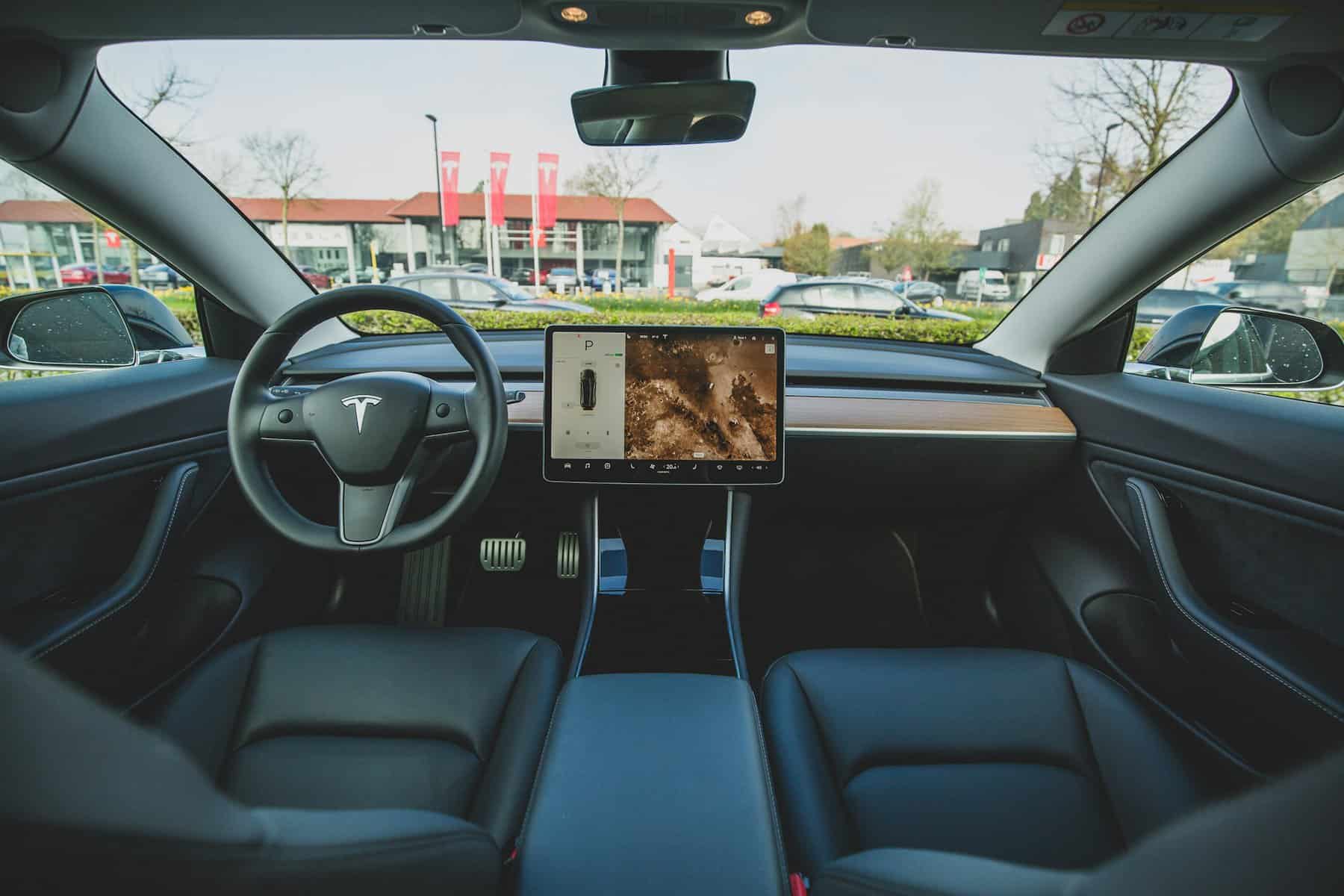
The issue with software-defined products
30 years ago the idea of “using” instead of “owning” was all the rage as a way to move into a more ecological future. To have products used by many people would allow to offer its services with smaller ecological footprints. This in par became true for car sharing services today. But the main use…
-

Artificial Intelligence everywhere
Disclaimer This following text was generated using GPT-4.Don’t take it too seriously. It is just a test. Artificial Intelligence (AI) stands out as a revolutionary technology that’s altering the foundation of how we live and work. The impact of AI on the global economy far-reaching and it is touching every industry sector. What is the…
-
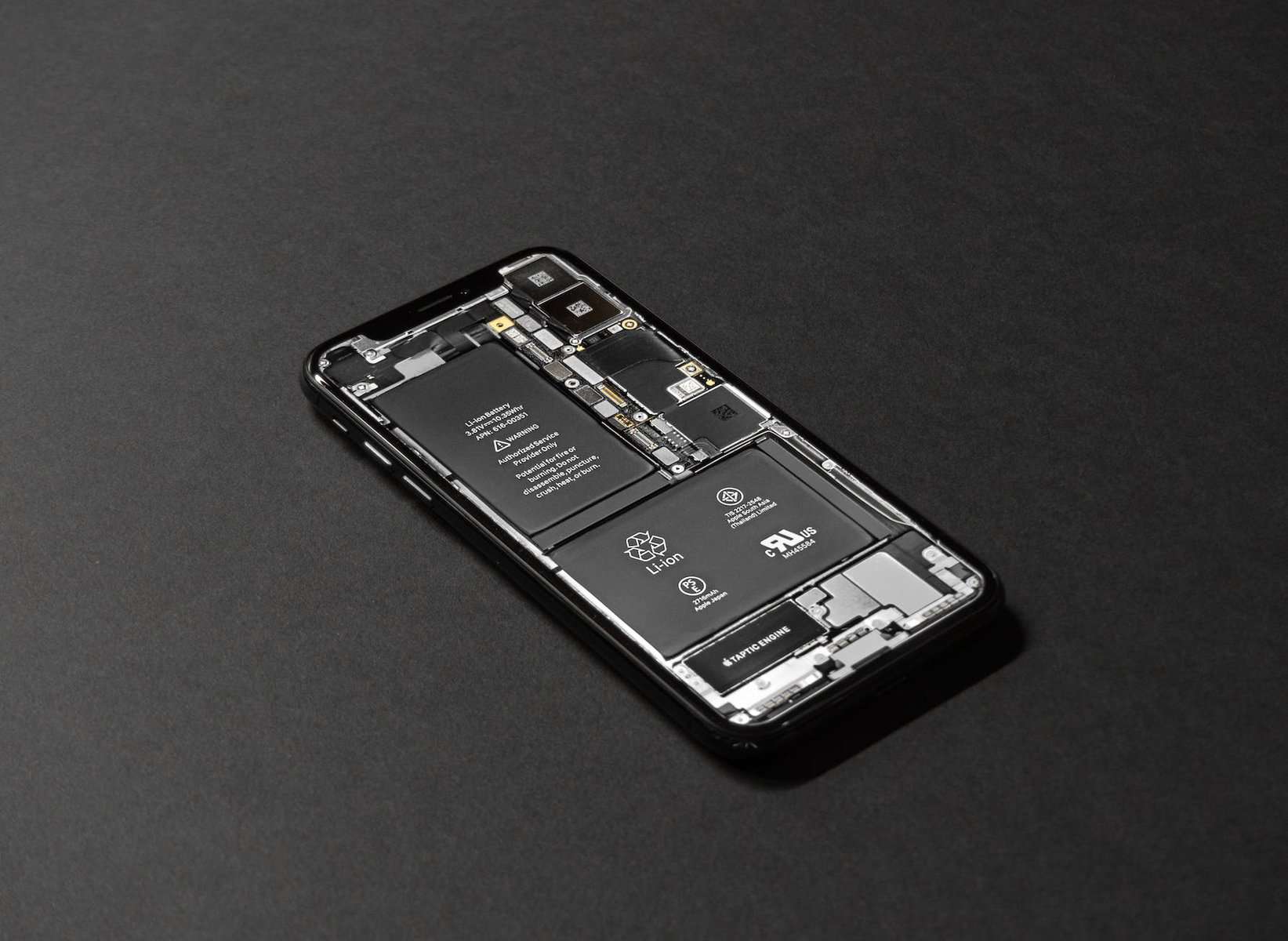
Greedy Apple is not interested in a good customer experience
As Tim Cook has told the investors and shareholders: Repairable devices reduce sales of new devices and that is holding down revenue in a saturated market. So this parts pairing scam that Apple uses to prevent anyone to replace parts in a broken device is a way to force customers to buy new hardware instead…
-
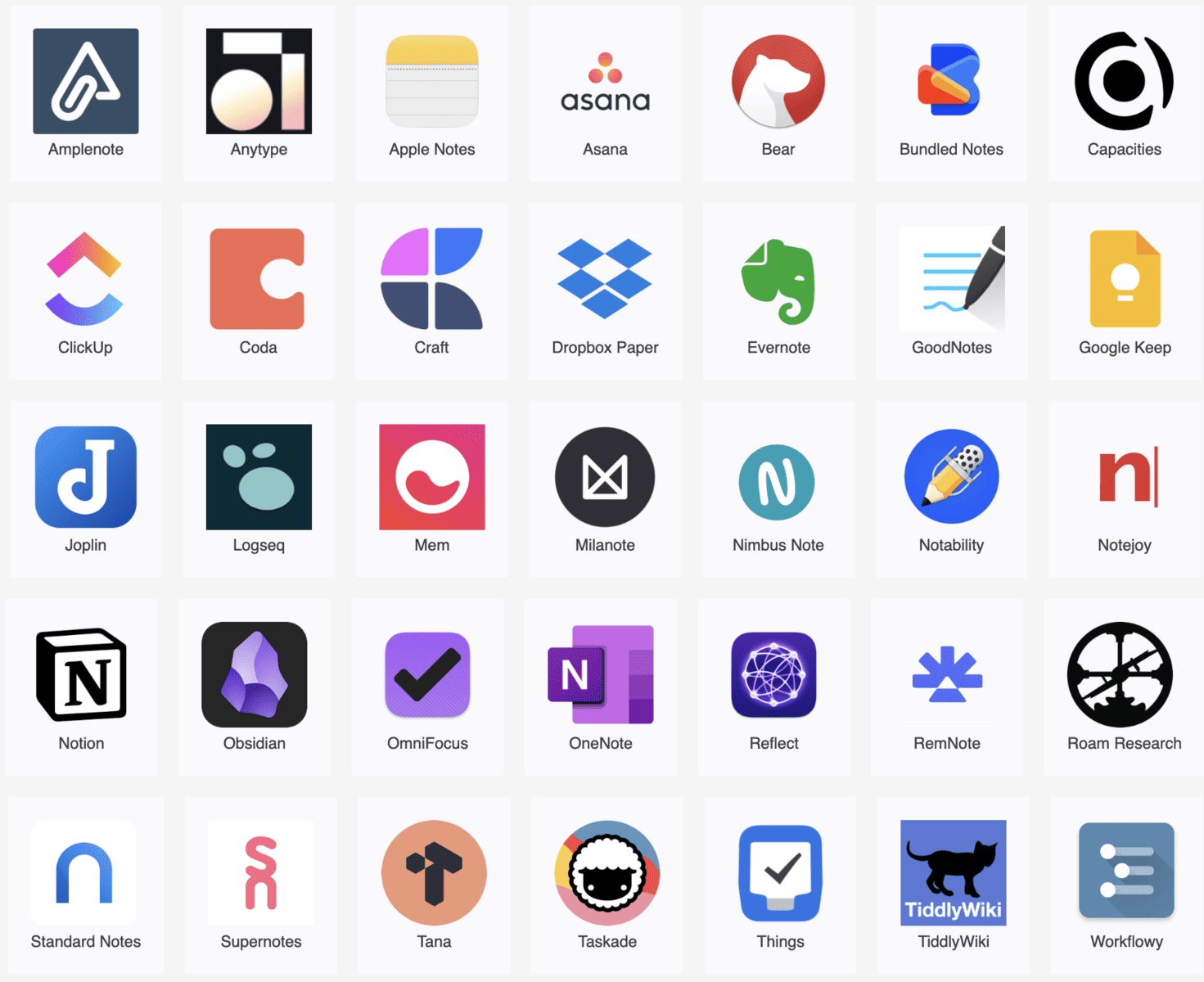
Note Taking Apps
The website https://noteapps.info/ provides a comparison of various note-taking software. It covers 35 best note taking apps analyzed over 295 features. Apps are compared based on various factors like compatibility with operating systems, tagging, syntax, attachments, offline work, cross device syncing, and price among others. While the list of apps is impressive it does not feature…
-
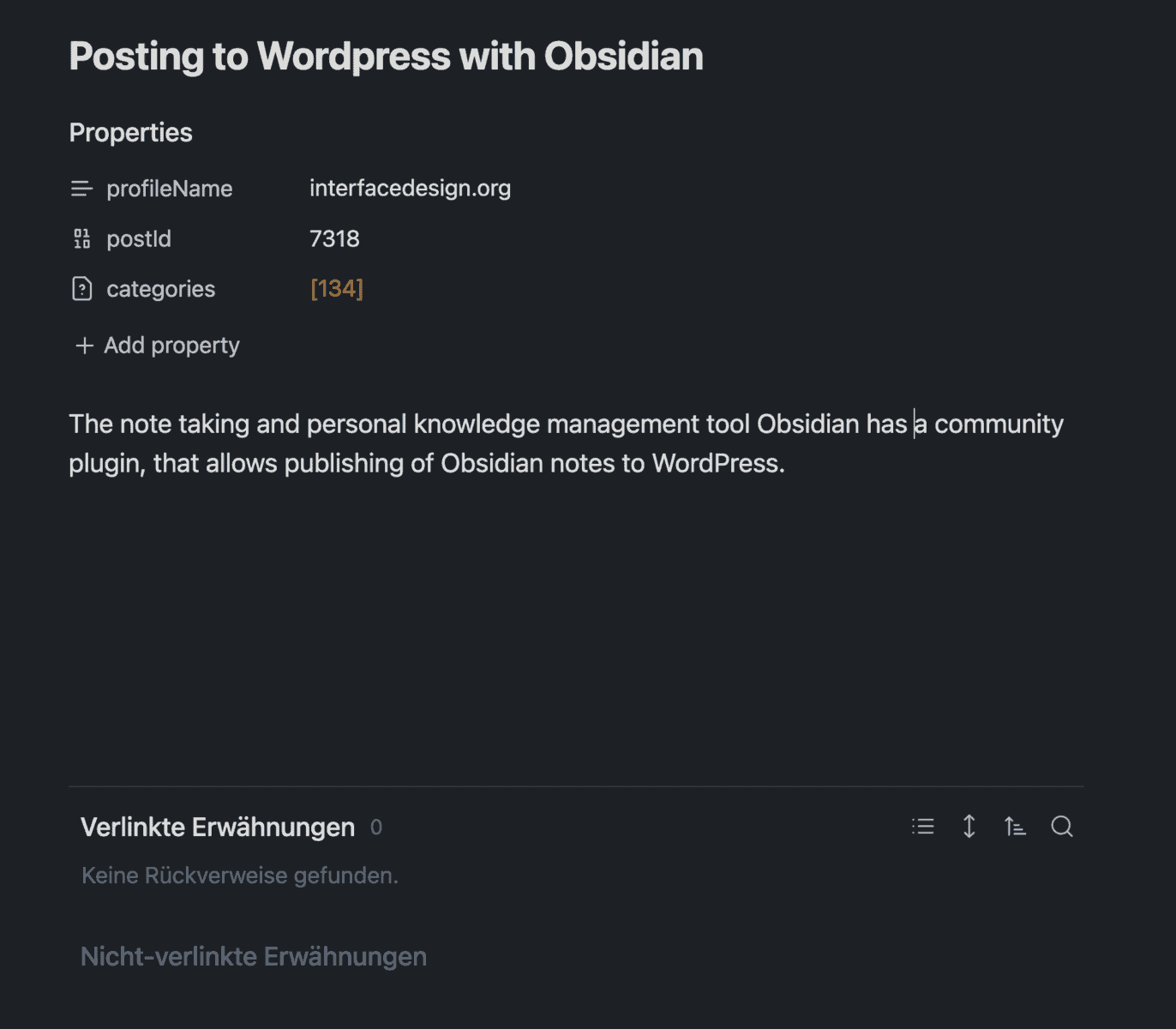
Posting to WordPress with Obsidian
The note taking and personal knowledge management tool Obsidian has a community plugin, that allows publishing of Obsidian notes to WordPress. It does not however support updating an Obsidian note from a changed WordPress post. It does not yet do pages, inline images or custom fields. But it seems the developer Cheng Liang is working…
-

Seminar »Information Topologies« in Winter Semester 2023/2024
The new project seminar for the students of the department of Design at Aachen University of Applied Sciences will be about “Information Topologies”. Information Topology deals with the organization and arrangement of information spaces. Often, the goal is to make information intuitively accessible and easier to find or learn, or to design a general strategy…
-

Posting to WordPress with Tinderbox
I am a long time Tinderbox user. But while having purchased a license many years I never have been able to fully use it for my purpose. It can do a lot of things – if you have the time to dig into it. Now Detlef Beyer has added an early prototype plugin to be able…
-

Facebook & Instagram destroy your attention span?
Just yesterday I wrote about Tim Berners-Lee complaining about what the web is like today. Today I found more commentary that supports this view. Big players like Facebook, Instagram introduced means to kill the ability of users to use URLs to create meaningful relations. On Facebook users are just allowed to express meaning in the…
-
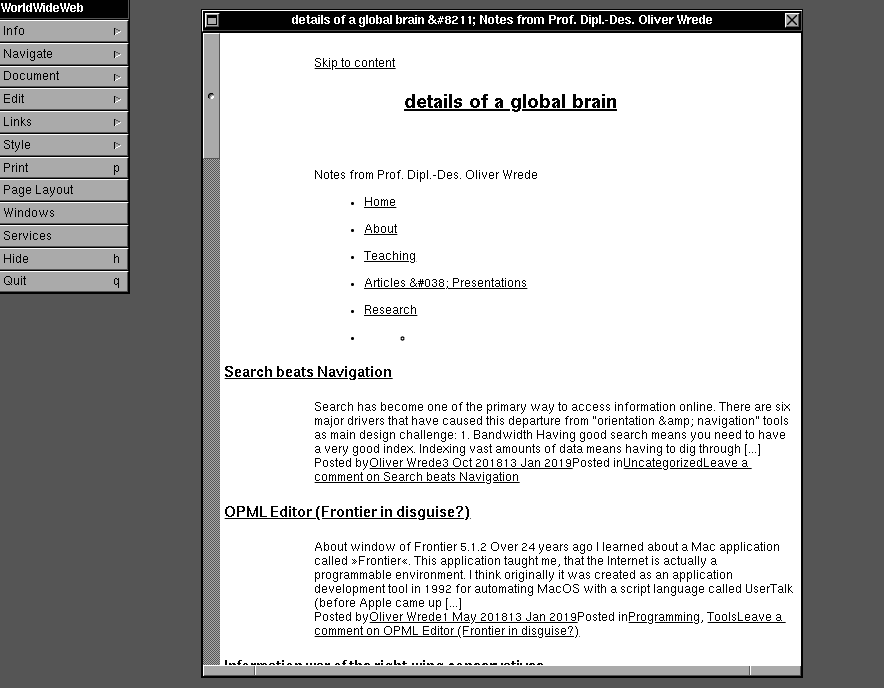
First Web Browser
The World Wide Web was invented as a hypertext document repository by Tim Berners-Lee who was working at the CERN research institute in Geneva. The OS Tim was using was NeXT (a predecessor to the MacOS X of today). There is a emulation of the first web browser in a NeXT UI (following links apparently…
-

Search beats Navigation
Search has become one of the primary ways to access information online. There are six major drivers that have caused this departure from »orientation and navigation« tools as the main design challenge. Search has become one of the primary ways to access information online. There are six major drivers that have caused this departure from…
-

OPML Editor (Frontier in disguise?)
Over 24 years ago I learned about a Mac application called »Frontier«. This application taught me, that the Internet is actually a programmable environment. Frontier was a genius concept invented by Dave Winer, because it was not only a script language (called „UserTalk”). It also came with an object database and an editor to edit…
-
Information war of the right-wing conservatives
This article by Carole Cadwalladr (@carolecadwalla) in The Guardian talks about how a couple of single right-wing conservatives in the USA use money, technology and the Internet to manipulate public opinion: And they already have set course to repeat their manipulative endeavor in Europe: Robert Mercer: the big data billionaire waging war on mainstream media With…